In the treatment of ophthalmic pathologies, the operation in the eyes is considered the most effective form.Thanks to modernized medical technologies, ocular surgical interventions are carried out very quickly.They practically do not cause harm to the eyeball, but sometimes unforeseen complications can occur.Since each operation has its own contraindications, the type of surgery is selected individually, depending on the type of disease.To reduce the risks of failed results after therapy, doctors recommend that you perform all the necessary tests.
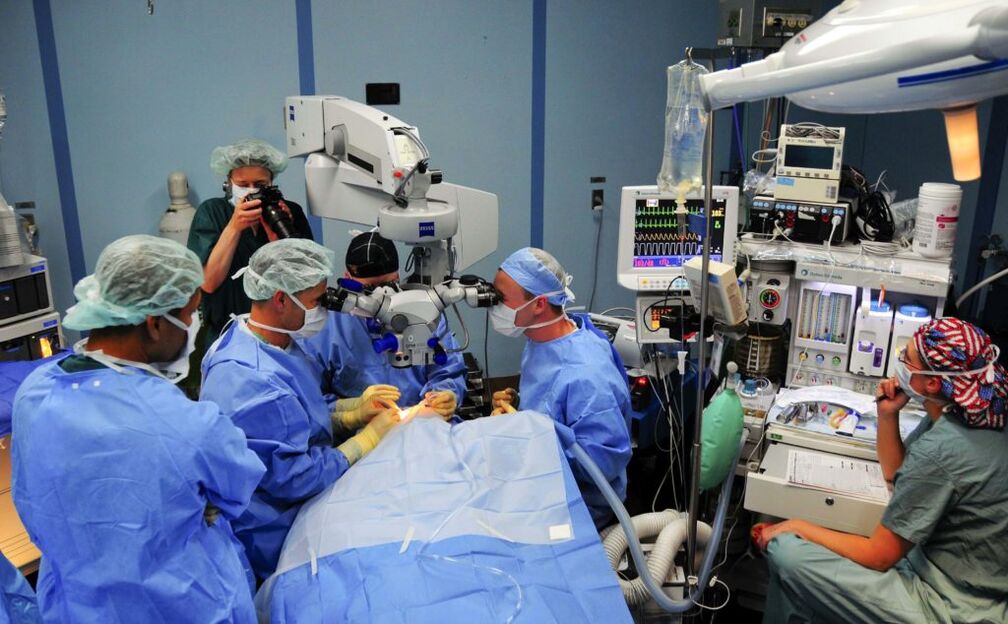
Indication
The procedure is prescribed after an exhaustive visual inspection and all the necessary diagnostic procedures.Any operation is a risk, therefore, before advising the operation, the doctor will attempt conservative treatment methods using pharmacological therapy.Surgery is prescribed only if medications do not give the desired results.Indications for surgery:
- Dystrophy of the eye;
- Belm formation in the cornea;
- keratoconus;
- traumatic damage to the visual organ;
- keratoglobus;
- Serious pathological changes in the organ.
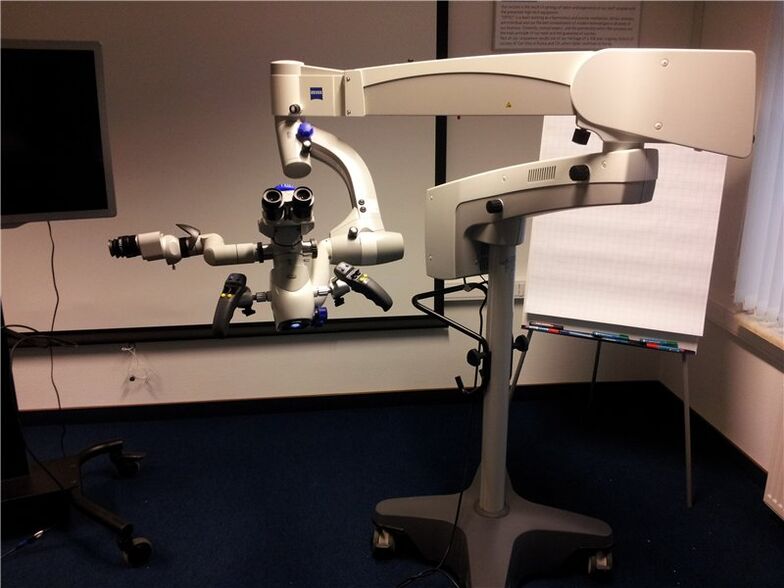
Types and behavior
Before the operation, it is necessary to submit to diagnoses, the doctor will express the list of testing in the consultation.Vision correction methods are individually selected by each patient, the patient with cataracts, myopia, strabismus, halazion, glaucoma and other dangerous deviations can be recommended.During manipulations, ophthalmologists use modern medical equipment, the intervention is carried out using a microscope, the vision is adjusted through very small incisions.Since the operation is simple and low in long -term hospitalization, long -term hospitalization is not required.After 2-3 hours, the doctor explains in detail to the patient all the nuances of the recovery period, how to take care of the eye and return home.The hospital is recommended only with serious pathologies (retinal detachment, serious inflammations, penetrating wounds).There are such types of operations:
- laser surgery;
- vitrectomy;
- Trabekulectomy;
- LTP, lie;
- Focheemulsification;
- scleroplasty;
- keratoplasty;
- Earning of the eye;
- Refractive lens replacement;
- Reticulation;
- Antihacomatous operations.
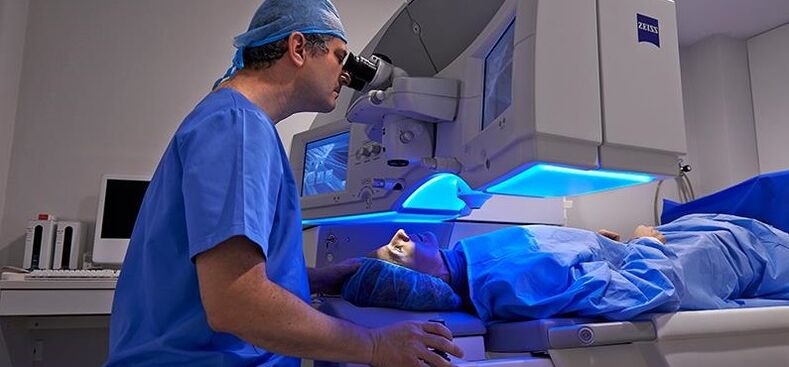
Laser vision correction
Do the operation for damage and ruptures of the retina.Before accepting, the patient must undergo an exhaustive exam.The drops that expand the pupil are dripping before the intervention.With the help of a laser, the eyes are made by microcirgery (the weak tissue tissues are sold), this prevents the penetration of fluid and subsequently detachment.The laser coagulation of the retina is simple, it takes several minutes in time, even children tolerate it well.
The operation takes place under local anesthesia.In the recovery period, the patient is recommended to abandon active sports, bad habits and physical overloads.The negative consequences of the correction of the laser vision can manifest in 3 hours: this is a greater secretion of tears, photophobia, redness, discomfort and rub in the eye.Doctors do not recommend this procedure under 18.The percentage of vision restoration after laser correction is very large.
Keratoplasty
With irreversible pathological changes in the eye, the okulists recommend this procedure.The operation to restore vision and eyes after the lesion consists of the complete elimination of the pathologically altered cloths of the cornea, which are then replaced by the donor.There may be many reasons for surgical intervention: it is keratoconus, severe damage to the tissues of the ocular globe, EED, ulcer changes caused by fungal infections and genetic predisposition.In surgery, local anesthesia is used.Using the instruments, the doctor must eliminate the painful cornea and replace it with a healthy one, after which the seams are applied.The weather lasts approximately 2 hours.The recovery period is 1 year.The eyes are recommended to protect with glasses, this will avoid injuries in the organ, complications after surgery.
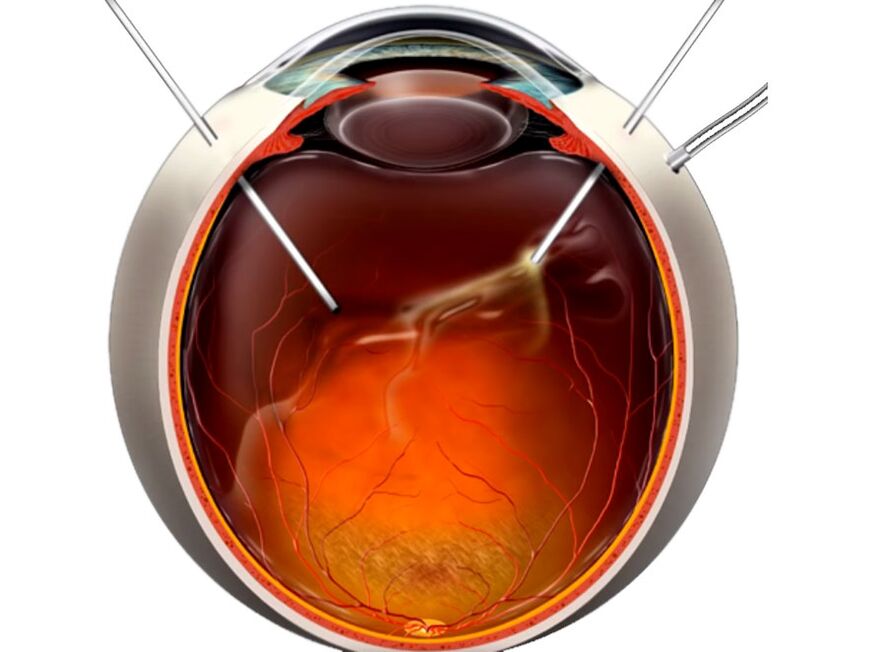
Vitrectomy
Make vision correction with pathologically altered vessels in the retina and when eliminated.Thanks to the professional manipulations, the doctor will get access to the rear of the eye.After extraction, the vitreous body is replaced by donor material.A saline solution, silicone oil, polymers and compounds towards the hormiguero of the perfactor are used as a special liquid.In ophthalmology, vitrectomy is considered a microvasic methodology, interference in the visual organ system is minimal, this contributes to the patient's return to the patient.With the help of this method, it is possible to restore the structure of the retina, to avoid the development of pathologies, whose names are traction and retinopathy.
Since the air is full of many dust particles, to avoid infection after organ correction, it is necessary to paste the eye operated with a bandage for some time.
Antihacomatous operations
Ocular surgery should be used if drug treatment is not authorization, and only after a complete exam.This type of intervention does not cause pain, it is quickly made, generally prescribed for the treatment of open angle and open angle glaucoma, and when the vessels germinate inside the eyes.The essence of the procedure is to eliminate the accumulated fluid within the organ, a laser is carried out.The most effective methodology is considered as not appropriate deep sclerectomy.In the therapy process, the corneal layer interprets surgically, thus reducing greater intraocular pressure.The possible consequences of operations of this type can be expressed in the formation of scars, at the beginning the eyes can be red.
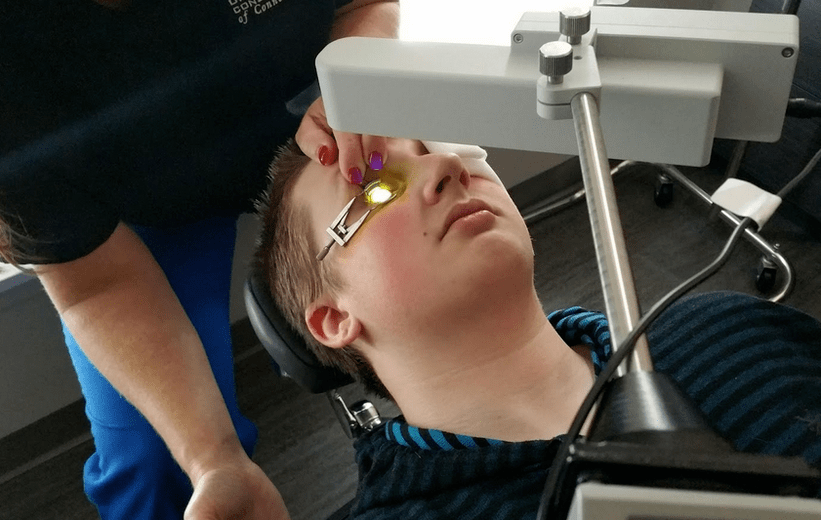
Reticulation
A fairly new method to treat keratoconus, using it, can prevent the development of the disease in the initial stages.Use of a tool whose name is a boring lamp and dripping vitamin B in the eye basin2, it is possible to strengthen cornea and stabilize the patient's condition.The advantage of the procedure is that the manipulation is carried out only once, 1 hour is sufficient to carry it out.Then to reduce the risks of injury, a special protective lens is placed in the eyeball.
Earning of the eye
This is a complex surgical operation, it is prescribed only in extreme cases, if an organ cannot be stored in a different way.The eyes are completely eliminated from the eye basin, and fiberglass prostheses are implanted in place, it will be real.When performing side effects, these are unforeseen inflammatory processes and implant displacement.Testimony includes pathologies such as:
- glaucoma to a terminal degree;
- the appearance of pain and the development of inflammation in the blind organ;
- Serious injuries and neoplasms.
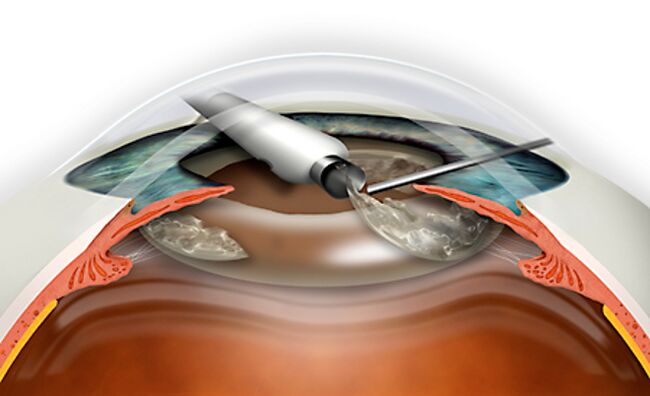
Refractal lens replacement
During surgery, the damaged element of the visual system with an artificial system occurs.When selecting an intraocular lens, the patient's individual characteristics are taken into account (age, gender).The procedure lasts 25 minutes, local anesthesia is used, surgical manipulations take place without blood.Through microdnaras, using ultrasound, the lens becomes an emulsion and removes the eye.Refraction replacement is done with pathologies such as:
- executing myopia and hyperoia;
- presbyopia;
- Prohibition in laser correction;
- High -granal hyperopia, which can cause glaucoma;
- Violation of refraction and rapid loss of visual function.
Correction of the vision of eximerlazer
Surgical intervention is recommended for ocular pathologies such as strabismus, astigmatism, farsightedness.There are several ways to carry out, this is a FEMO Lasik, Federal Republic of the Criminal Code, Lasik.The doctor cuts the upper layer of the cornea, its curvature is changed using a cold beam of excessive laser, it is better to use local anesthesia and a mediocre.After an eximerlazer correction, the patient gets rid of the problem, since the procedure is effective in 99%, in the advantage over other interventions.A failed operation leads to hyper -Correction, cause redness and the corneal layer seems inflamed.
Correction of strabismus
Ocular surgery for strabismus aims to correct the symmetrical position of the organ.Surgical intervention is divided into two types: this is an increase in the muscles responsible for the movement of the visual organ and relief in the oculomotor muscle.In the first case, a part of the muscular system, as well as anti -consposition and tenoraphia, are resected, in the second they change the place of muscle fixation, they lengthen it by plasticity.What method to resort, the surgeon decides, given the individual factors and the degree of gravity of the pathology.
Scleroplasty
Physicians recommend referring to this type of intervention with the un controlled development of myopia.Using the methodology, strengthen and stabilize the patient's condition, stop vision loss.The scleroplasty shows children and adolescents at the age of 17 during the active period of growth, with pathologies of the eye as myopia in rapid development.
After eliminating the view in the first days, the patient may feel severe pain, in this case, he must consult his doctor and choose the correct analgesics.
Elimination of formations
The surgical intervention of this type is indicated for Halazio, cystic neoplasms of conjunctiva and ptergium.Holding growth with tweezers, the doctor cuts it even more to eliminate the negative consequences, the wound is cauls.To prevent infection, an antibiotic ointment on the eyelids is applied, and a sterile bandage is used.The disadvantage is that the disease can develop again, in this case, the return to this method of therapy cannot be avoided.
Cataract elimination
During the microcirgey, a pathologically modified lens is eliminated, the therapy is carried out using laser and ultrasonic facoemulsification.Special surgical tools through micronads are diluted and removed from the eye, replaced by artificial.Sometimes they do a procedure called intracapsular and extracapsular extraction.




















